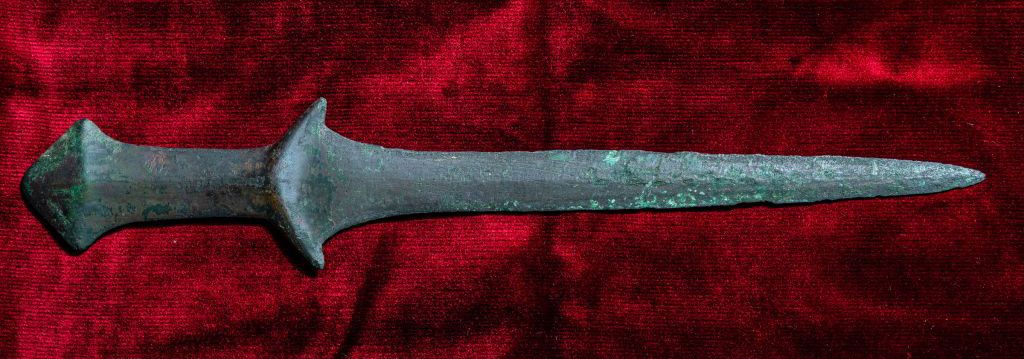Graduate Student Discovers One of World’s Oldest Swords in Mislabeled Monastery Display
At 5,000 years old, the weapon predates the era when humans first started using tin to make bronze
:focal(475x203:476x204)/https://tf-cmsv2-smithsonianmag-media.s3.amazonaws.com/filer/3c/b9/3cb92c21-9f5f-4db4-9f12-38cebdf07919/a6dxwuwsprpyaqcf7liqm6-970-80.jpg)
Just weeks after a team of German researchers announced that an archaeology intern had unearthed a spectacular, 2,000-year-old Roman dagger in North Rhine-Westphalia, headlines are touting another student-led discovery centered on one of the oldest swords ever found.
Italian archaeologist Vittoria Dall’Armellina stumbled upon the blade in a monastery-turned-museum during her tenure as a graduate student at Venice’s Ca’ Foscari University in 2017. Billed in its display as medieval—perhaps several hundred years old at most—the sword struck Dall’Armellina, an expert in Bronze Age artifacts, as something far more ancient.
“I was pretty sure of the antiquity of the sword,” Dall’Armellina tells Live Science’s Tom Metcalfe in an email.
Housed at a monastery on the Venetian island of San Lazzaro degli Armeni, the blade boasted a distinctive shape that reminded the young archaeologist of some of the oldest swords known to humankind, which date back to around 3,000 B.C. and were recovered from sites in western Asia. To confirm her suspicions, Dall’Armellina and her colleagues spent the next two years tracing the artifact’s origins back in time through a series of monastic archives.
After much digging, the team realized that the sword was discovered at Kavak, a settlement near the ancient Greek colony of Trebizond in what’s now eastern Turkey, some 150 years ago. Shortly after, it fell into the hands of Armenian art collector Yervant Khorasandjian, who then gifted it to a monk named Ghevont Alishan. Upon Alishan’s death in 1901, the monastery acquired his belongings—including the sword, which they mistook for a recent construction.

A chemical analysis of the sword solidified its ancient roots. Fashioned from a combination of copper and arsenic—one of the earliest forms of bronze—the weapon almost certainly predates the late third millennium B.C., when humans first transitioned to blending bronze using tin. The blade’s sculpting resembles that of a pair of twin swords found at Arslantepe, another archaeological site that’s been dated to about the third or fourth millennium B.C., according to a statement.
Believed to be among the first swords ever constructed, the Arslantepe duo now has company—though a few lingering questions about the San Lazzaro degli Armeni blade remain. After millennia of degradation, the weapon no longer carries traces of use, if any ever existed at all. Though swords were certainly invented for their utility on the battlefield, they also served as commemorative symbols, following warriors into the grave.
“Local chiefs were buried with a lot of weapons and other precious objects,” Ca’ Foscari University archaeologist Elena Rova tells Live Science. “They probably wanted to emphasize their status as warriors.”
Separated from its human partner, the sword still has much of its story to tell. But Dall’Armellina’s discovery, at least, adds a few thousand years to a history formerly forgotten.
/https://tf-cmsv2-smithsonianmag-media.s3.amazonaws.com/accounts/headshot/10172852_10152012979290896_320129237_n.jpg)
/https://tf-cmsv2-smithsonianmag-media.s3.amazonaws.com/accounts/headshot/10172852_10152012979290896_320129237_n.jpg)